Car advice
Latest articles
-
 When can I drive after drinking? UK drink-drive limits explainedLong winter evenings can tempt a thirst like no other time of year. We’ll hark a beer garden’s call at the briefest suggestion of sunlight, but a spike in drink...
When can I drive after drinking? UK drink-drive limits explainedLong winter evenings can tempt a thirst like no other time of year. We’ll hark a beer garden’s call at the briefest suggestion of sunlight, but a spike in drink... -
 Prime Day 2025: Last few hours left for the best Shark deals on our favourite tried and tested productsShark is one of the UK’s top-selling vacuum cleaner brands, highly regarded for its innovative designs, strong performance, and user-friendly flexibility in both corded and cordless models. With two days...
Prime Day 2025: Last few hours left for the best Shark deals on our favourite tried and tested productsShark is one of the UK’s top-selling vacuum cleaner brands, highly regarded for its innovative designs, strong performance, and user-friendly flexibility in both corded and cordless models. With two days... -
-
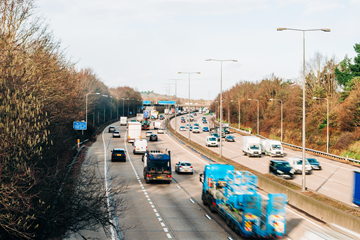 What is a slip road: definition and safe merging tipsWhether you’re a newcomer to driving or have some experience on UK roads, chances are you’ve come across or heard about a slip road. If you’re unsure of what the...
What is a slip road: definition and safe merging tipsWhether you’re a newcomer to driving or have some experience on UK roads, chances are you’ve come across or heard about a slip road. If you’re unsure of what the... -
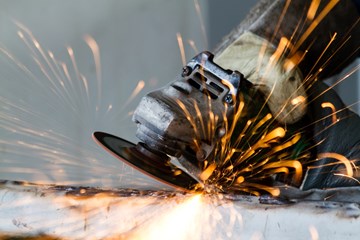 Can you use an angle grinder to polish a car? Risks & safer optionsProfessionals have their armouries of tools for specific jobs for good reason. DIYers only use a few tools frequently, leaving more specialist ones to sit idle for long periods of...
Can you use an angle grinder to polish a car? Risks & safer optionsProfessionals have their armouries of tools for specific jobs for good reason. DIYers only use a few tools frequently, leaving more specialist ones to sit idle for long periods of... -
 How to change engine oil: your step-by-step guideIn these straitened times, you may be looking around for ways of reducing your car maintenance costs. There are lots of tasks that you could take on yourself, such as...
How to change engine oil: your step-by-step guideIn these straitened times, you may be looking around for ways of reducing your car maintenance costs. There are lots of tasks that you could take on yourself, such as... -
-
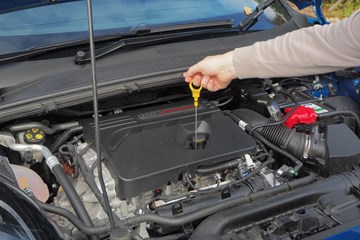 How to perform pre-holiday car health checks at homeGetting ready for a holiday road trip? Keeping your car in top shape doesn’t have to mean endless trips to the garage. With a few simple checks you can do...
How to perform pre-holiday car health checks at homeGetting ready for a holiday road trip? Keeping your car in top shape doesn’t have to mean endless trips to the garage. With a few simple checks you can do... -
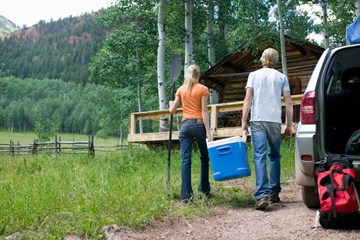 The best car cooler boxes for the perfect summer road trip 2025Those summer road trips are always a joy. With no deadline to reach your destination (if you even have one), you can take the time to enjoy the drive accompanied...
The best car cooler boxes for the perfect summer road trip 2025Those summer road trips are always a joy. With no deadline to reach your destination (if you even have one), you can take the time to enjoy the drive accompanied... -
-
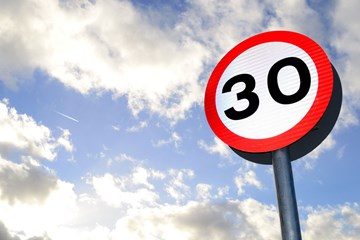 UK speed limits explained: what are the legal limits and why?Speed limits are one of the most basic rules of the road, but they’re not always as simple as they seem. With different limits for different roads, changes to urban...
UK speed limits explained: what are the legal limits and why?Speed limits are one of the most basic rules of the road, but they’re not always as simple as they seem. With different limits for different roads, changes to urban... -
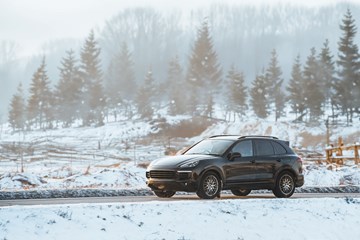 Driving in Europe - everything you need to knowThousands of British people find themselves driving in Europe every year, particularly during the summer months. You might be travelling there by plane and hiring a car, or using a...
Driving in Europe - everything you need to knowThousands of British people find themselves driving in Europe every year, particularly during the summer months. You might be travelling there by plane and hiring a car, or using a... -
 What to do if you've put the wrong fuel in your car - step by stepWe’ve all been there. You pull into a fuel station at the end of a long day, tired and keen to get home, you pick up the first available pump....
What to do if you've put the wrong fuel in your car - step by stepWe’ve all been there. You pull into a fuel station at the end of a long day, tired and keen to get home, you pick up the first available pump.... -
-
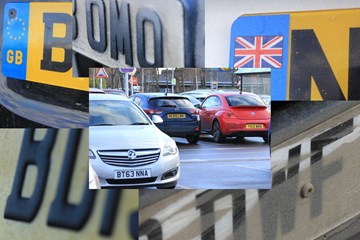 UK number plate Law 2025: legal rules, sizes and finesNumber plates have been a feature of cars for so long that it’s easy to forget they’re there – but they’re more complex than you might first expect. When buying...
UK number plate Law 2025: legal rules, sizes and finesNumber plates have been a feature of cars for so long that it’s easy to forget they’re there – but they’re more complex than you might first expect. When buying... -
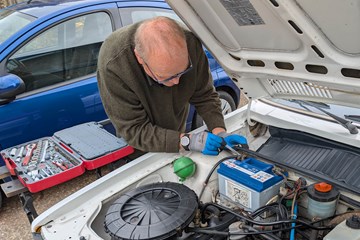 How to change a car battery: step-by-step instructions and expert tipsThere’s a particular sort of dread that sets in when you turn the key, or press the starter button, and your car doesn’t start. Slow cranking, a few pathetic clicks...
How to change a car battery: step-by-step instructions and expert tipsThere’s a particular sort of dread that sets in when you turn the key, or press the starter button, and your car doesn’t start. Slow cranking, a few pathetic clicks... -
-
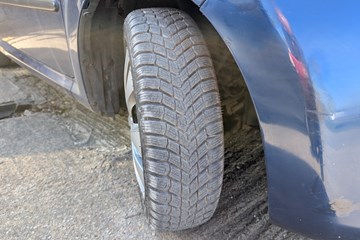 Tyre Test: Davanti Alltoura all-season tyres 12 month testWe’ve fitted a full set of Davanti Alltoura 4-Seasons tyres to our long-term 2007 Citroen C1 and we’re running them for a year to see how all-season tyres cope with...
Tyre Test: Davanti Alltoura all-season tyres 12 month testWe’ve fitted a full set of Davanti Alltoura 4-Seasons tyres to our long-term 2007 Citroen C1 and we’re running them for a year to see how all-season tyres cope with... -
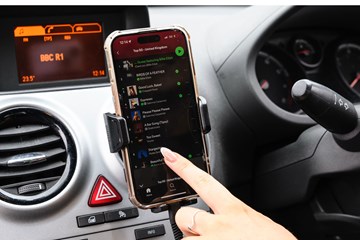 The current UK law on using your mobile phone while drivingMost of us like to stay entertained while driving, whether by making a quick call or playing music on our smartphones. Using a phone while driving has been illegal in...
The current UK law on using your mobile phone while drivingMost of us like to stay entertained while driving, whether by making a quick call or playing music on our smartphones. Using a phone while driving has been illegal in... -
 How to clean your car at home: step-by-step guideThere’s something genuinely satisfying about cleaning your car at home. I’ve lost count of the hours spent on my driveway transforming one of my careworn old bangers into something that...
How to clean your car at home: step-by-step guideThere’s something genuinely satisfying about cleaning your car at home. I’ve lost count of the hours spent on my driveway transforming one of my careworn old bangers into something that... -
-
 Everything you need to know about cleaning your car’s interiorKeeping your car clean on the outside is one thing, but the real satisfaction comes from stepping into a spotless, fresh-smelling cabin. As someone who spends more time than I...
Everything you need to know about cleaning your car’s interiorKeeping your car clean on the outside is one thing, but the real satisfaction comes from stepping into a spotless, fresh-smelling cabin. As someone who spends more time than I... -
 How much is a speeding fine and will I get points on my license?We all like to think that we’re experienced drivers who stick to the UK speed limits, but if you stray over the posted limit, do you know how much a...
How much is a speeding fine and will I get points on my license?We all like to think that we’re experienced drivers who stick to the UK speed limits, but if you stray over the posted limit, do you know how much a... -
-
 The best wired CCTV systems UK 2025Why should wired CCTV systems be considered to increase our security game? For one, the ‘stuff’ we keep around our home, garage and garden is becoming more and more sophisticated...
The best wired CCTV systems UK 2025Why should wired CCTV systems be considered to increase our security game? For one, the ‘stuff’ we keep around our home, garage and garden is becoming more and more sophisticated... -
 Best 10W-40 engine oil you should useEngine oils are essential for keeping an engine running, and 10W-40 engine oil is fairly common with engines that rev highly and have a few miles on them. Most modern...
Best 10W-40 engine oil you should useEngine oils are essential for keeping an engine running, and 10W-40 engine oil is fairly common with engines that rev highly and have a few miles on them. Most modern... -
 Say goodbye to engine gunk: Best petrol cleaners you can use todayYou may not realise it immediately, but a petrol engine cleaner can be the healthiest thing for your engine when you’re achieving high miles. Of course, good engine oil is...
Say goodbye to engine gunk: Best petrol cleaners you can use todayYou may not realise it immediately, but a petrol engine cleaner can be the healthiest thing for your engine when you’re achieving high miles. Of course, good engine oil is... -
Most popular articles
-
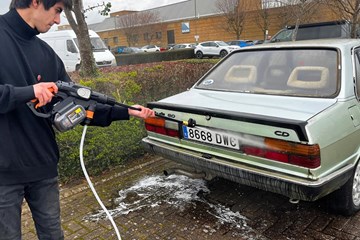 Best cordless pressure washers tested: Powerful, portable options that get the job doneWe all love how powerful and convenient pressure washers are, but there are going to be times when a cordless pressure washer will become very useful. The spring and summer...
Best cordless pressure washers tested: Powerful, portable options that get the job doneWe all love how powerful and convenient pressure washers are, but there are going to be times when a cordless pressure washer will become very useful. The spring and summer... -
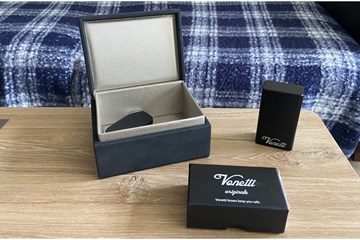 Best faraday boxes for car keys 2025: tested signal-blocking solutions to prevent keyless theftWhat are Faraday boxes all about? That’s a good question. It does sound like the kind of thing HG Wells might have used to get his time machine going, but...
Best faraday boxes for car keys 2025: tested signal-blocking solutions to prevent keyless theftWhat are Faraday boxes all about? That’s a good question. It does sound like the kind of thing HG Wells might have used to get his time machine going, but... -
-
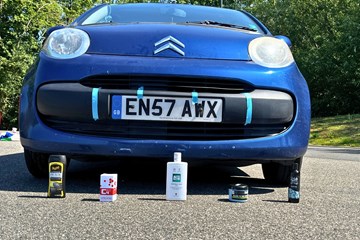 Discover the best black trim restorers to revive your car’s shine tested by our expertsMost cars made since the late 1980s feature black plastic exterior parts, which are prone to fading and discolouration over time. Whether it’s the large bumper panels on modern vans...
Discover the best black trim restorers to revive your car’s shine tested by our expertsMost cars made since the late 1980s feature black plastic exterior parts, which are prone to fading and discolouration over time. Whether it’s the large bumper panels on modern vans... -
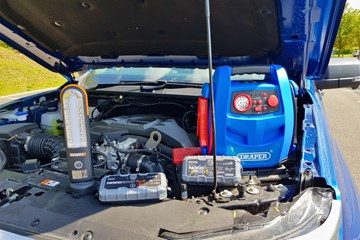 The best jump starters tried and tested by Parkers 2025The beefiest of battery chargers, car jump starters can sit ready to inject a brief but powerful jolt of electricity into a dead battery to get an engine running again....
The best jump starters tried and tested by Parkers 2025The beefiest of battery chargers, car jump starters can sit ready to inject a brief but powerful jolt of electricity into a dead battery to get an engine running again.... -
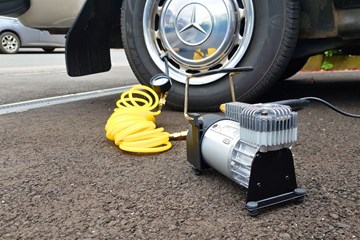 Flat tyre? Not on our watch – The best tyre inflator compressors are here to rescue youWhy are tyre inflator compressors so important? Your tyres are the only part of a car that comes into contact with the road, so it’s vitally important to keep the rings...
Flat tyre? Not on our watch – The best tyre inflator compressors are here to rescue youWhy are tyre inflator compressors so important? Your tyres are the only part of a car that comes into contact with the road, so it’s vitally important to keep the rings... -
-
 The best car wax tested by Parkers 2025: keep your vehicle sparkling cleanIf you want to give your car’s paint an extra protective coat, you need car wax. This hardy substance differs from your regular car cleaning products as it adds a...
The best car wax tested by Parkers 2025: keep your vehicle sparkling cleanIf you want to give your car’s paint an extra protective coat, you need car wax. This hardy substance differs from your regular car cleaning products as it adds a... -
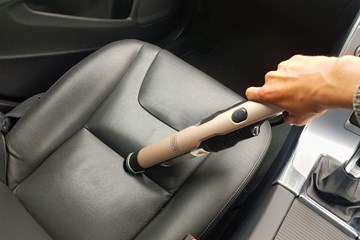 The best handheld vacuum cleaners tested 2025Small in size and able to deal with dust any time you want, the best handheld vacuum cleaners will prove invaluable if you like crumb-free upholstery. You wouldn’t think twice...
The best handheld vacuum cleaners tested 2025Small in size and able to deal with dust any time you want, the best handheld vacuum cleaners will prove invaluable if you like crumb-free upholstery. You wouldn’t think twice... -
-
 The current UK law on using your mobile phone while drivingMost of us like to stay entertained while driving, whether by making a quick call or playing music on our smartphones. Using a phone while driving has been illegal in...
The current UK law on using your mobile phone while drivingMost of us like to stay entertained while driving, whether by making a quick call or playing music on our smartphones. Using a phone while driving has been illegal in... -
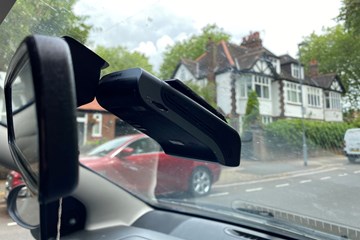 Caught on camera: best dashcams to buy in 2025 for clear, safe drivingIn real life, road incidents don’t come with dramatic music or slow-motion build-ups – they happen in an instant, without warning. One moment, you’re cruising along, and the next, chaos....
Caught on camera: best dashcams to buy in 2025 for clear, safe drivingIn real life, road incidents don’t come with dramatic music or slow-motion build-ups – they happen in an instant, without warning. One moment, you’re cruising along, and the next, chaos.... -
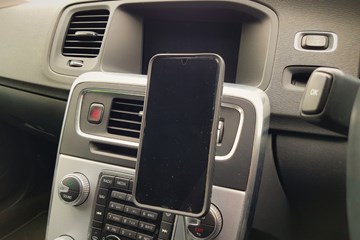 The Best MagSafe car mounts tested by Parkers 2025MagSafe car mount technology was developed by Apple and launched in the iPhone 12 series and then in all of the subsequent generations of iPhones that followed. It’s a form...
The Best MagSafe car mounts tested by Parkers 2025MagSafe car mount technology was developed by Apple and launched in the iPhone 12 series and then in all of the subsequent generations of iPhones that followed. It’s a form... -
-
 The best rain repellents for cars tried and tested 2025Why are rain repellents worth considering? Given Britain’s famously moist weather, driving around in the wet is something we’re all used to. But driving in damp and rainy conditions with...
The best rain repellents for cars tried and tested 2025Why are rain repellents worth considering? Given Britain’s famously moist weather, driving around in the wet is something we’re all used to. But driving in damp and rainy conditions with... -
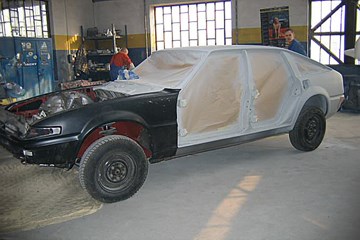 How much to respray a car and is it worth the cost?I’ve always loved to see a freshly painted older car. There’s something about a deep, glossy finish that can completely transform a tired-looking motor and make it feel almost new...
How much to respray a car and is it worth the cost?I’ve always loved to see a freshly painted older car. There’s something about a deep, glossy finish that can completely transform a tired-looking motor and make it feel almost new... -
-
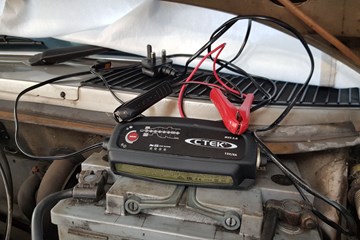 The best smart battery charger for a healthy car batteryTo maintain the health and charge of your car’s battery, you should consider one of the best smart battery chargers available. These are the cream of the crop in the...
The best smart battery charger for a healthy car batteryTo maintain the health and charge of your car’s battery, you should consider one of the best smart battery chargers available. These are the cream of the crop in the... -
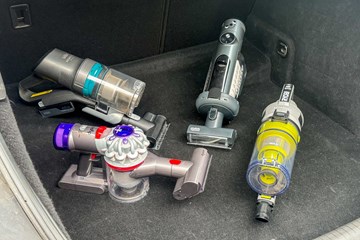 The best rated car vacuum cleaners in the UK for 2025Keeping your car’s interior clean is much easier than it used to be, thanks to massive developments in car vacuum cleaner technology. Previously, it was a case of choosing between...
The best rated car vacuum cleaners in the UK for 2025Keeping your car’s interior clean is much easier than it used to be, thanks to massive developments in car vacuum cleaner technology. Previously, it was a case of choosing between... -
 The best ceramic coating for cars 2025It’s time to unravel the pros and cons and explain the intriguing world of ceramic coating products for protecting your car. This form of automotive paint protection is shrouded in...
The best ceramic coating for cars 2025It’s time to unravel the pros and cons and explain the intriguing world of ceramic coating products for protecting your car. This form of automotive paint protection is shrouded in... -
-
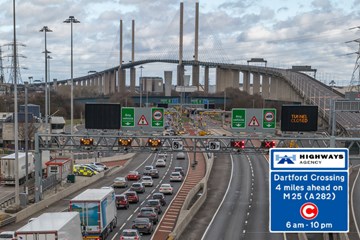 Dartford crossing charge: How to pay and avoid finesThe Dartford Crossing – the stretch of the M25 that crosses the River Thames between Dartford and Thurrock – is one of the UK’s busiest roads. But with no toll...
Dartford crossing charge: How to pay and avoid finesThe Dartford Crossing – the stretch of the M25 that crosses the River Thames between Dartford and Thurrock – is one of the UK’s busiest roads. But with no toll... -
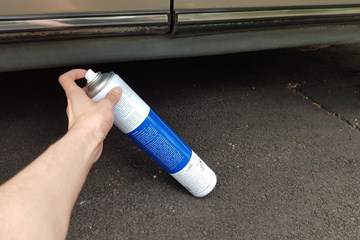 Stop rust before it starts – hands-on reviews of 2025’s best car undersealBelieve it or not, applying car underseal is one of the best things you can do to ensure the safety of your pride and joy. While keeping the exterior shiny...
Stop rust before it starts – hands-on reviews of 2025’s best car undersealBelieve it or not, applying car underseal is one of the best things you can do to ensure the safety of your pride and joy. While keeping the exterior shiny... -
-
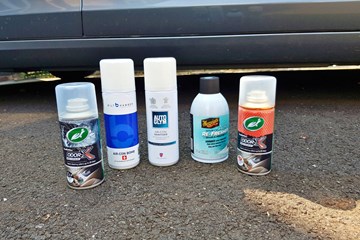 The best air con cleaners for cars tried and tested by experts 2025It isn’t immediately obvious to most people by adding air con cleaners to your car interior cleaning job list – but they are very useful for keeping your vehicle hygienic....
The best air con cleaners for cars tried and tested by experts 2025It isn’t immediately obvious to most people by adding air con cleaners to your car interior cleaning job list – but they are very useful for keeping your vehicle hygienic.... -
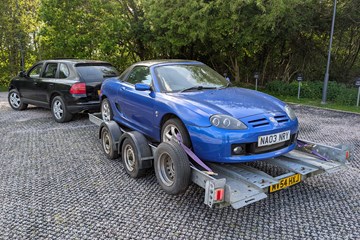 UK Towing Capacity Guide: What can your car tow?Towing massively increases your car’s ability to carry stuff, from garden waste to a caravan, to a horsebox, to another car. But it’s vitally important that you tow legally and...
UK Towing Capacity Guide: What can your car tow?Towing massively increases your car’s ability to carry stuff, from garden waste to a caravan, to a horsebox, to another car. But it’s vitally important that you tow legally and... -
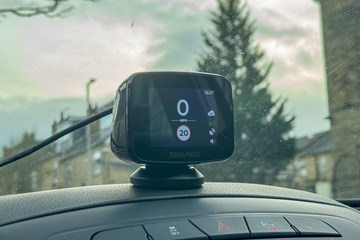 The best radar detectors for cars 2025: a motoring expert's choicesRadar detectors can be useful in everyday life. For one thing, nobody wants to be fined for speeding, but even the most conscientious driver can let their concentration slip and...
The best radar detectors for cars 2025: a motoring expert's choicesRadar detectors can be useful in everyday life. For one thing, nobody wants to be fined for speeding, but even the most conscientious driver can let their concentration slip and... -
Parkers expert car advice
Car ownership can be a worry for many drivers. Parkers is here to make your life easier – by answering common questions and guiding you to make the best decisions, whether you're buying a car, selling or trying to work out your tax bill.
This section is updated daily and we hope you find our stories helpful. They're written in plain English and we aim to take the pain out of car ownership.
We're also here to help with your car purchase
Don't forget to check out these sections if you need more specific assistance:
- Car finance advice
- Best cars: Parkers top recommendations
- Search new and used cars for sale on Parkers
- Click here for a Parkers free car valuation
You can contact us for help with car-related problems, and we'll try and get back to you

